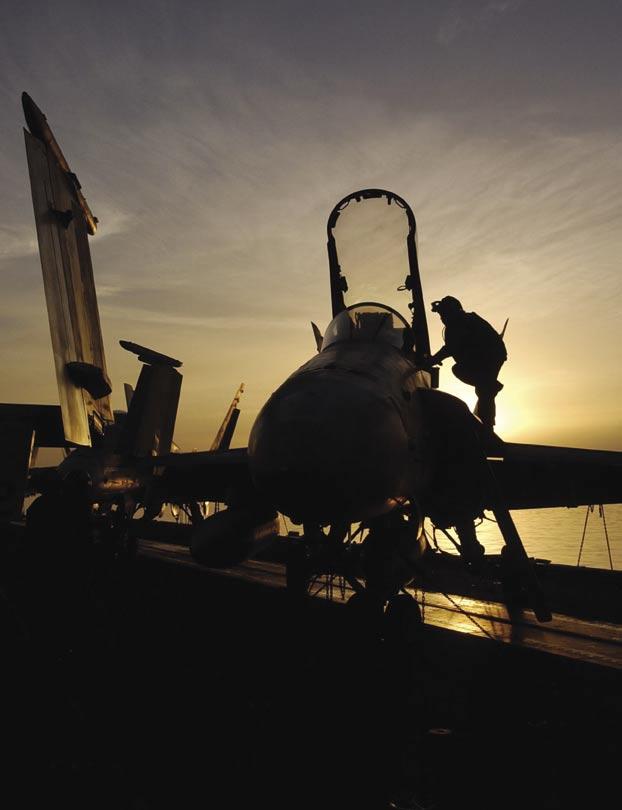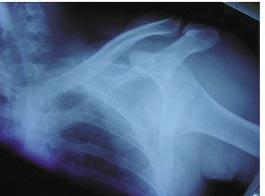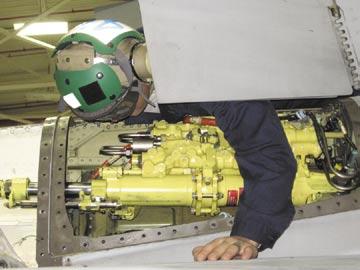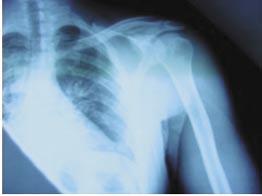
3 minute read
3,000 PSI Is Unforgiving
By AM2 (AW) Shawn Hayes
Unlike most days at sea, this one actually was going to be an easy one. No flights were scheduled, which meant we would focus on FA-18 aircraft maintenance to prepare the jets for the next day. After getting the daily pass down from the leading petty officer (LPO) of the airframes shop, I was tasked to troubleshoot aircraft 400. Little did I know that my quiet day was about to get very exciting.
Advertisement
This particular aircraft had two leaking servo-cylinder discrepancies: a leaking starboard stab servo and starboard aileron servo. After gathering the necessary tools, my fellow worker and I proceeded to the flight deck to remove the panels and prepare the aircraft for a lowpower turn to investigate the leaks.
Everyone was in place: We had a flight-deck coordinator, low-power-turn operator, plane captain, my
Navy photo by PH3 Danny Ewing, Jr.
assistant, and me—the CDI. The plane captain gave the turn operator the signal to start the No. 2 engine. After an uneventful engine start, I positioned myself across the back of the aircraft, with my left hand on the starboard stab to support my upper body. This position put my left arm and shoulder between the starboard rudder and airframe and allowed me to get a close look at the leak as soon as the No. 1 engine came online. What I did not consider was that the rudder would move to the streamlined position when that engine started because it runs from the 3,000-psi, No. 1 hydraulic system.
With that being said, the PC gave the signal to fire up the No. 1 engine. The rudder moved into the streamlined position as advertised. Instant disaster occurred because my arm was between the rudder and stabilizer servo cylinder! My left arm and shoulder were wedged,
Separated shoulder


with pressure from the rudder rapidly increasing. I yelled and screamed for help. My shipmate quickly signaled the PC and FDC to shut down the aircraft, and a “medical emergency” quickly was called away. Several people pushed the rudder back to free my arm.
I spent the next three days in medical and more than 70 days on light and limited duty, nursing a dislocated shoulder. My X-rays clearly showed the dislocated shoulder before and after it was popped back in place— quite an experience.
I could have avoided this situation had I simply used ORM and followed safety procedures already in place with the command’s maintenance SOP. I will admit I let down my guard and became complacent during this
Shoulder reset

routine maintenance evolution. I should have waited for both engines to come online and then requested a “hands off” signal from the PC before going near any flight-control surface with hydraulic power applied. We also violated the squadron’s maintenance SOP; we didn’t do a brief of the evolution with all involved persons. We all were so familiar with our duties that we went right to work. We only briefed the turn with the maintenance-desk chief, FDC, and turn-qualified guy. Had we done a simple brief of the job, we could have discussed roles and responsibilities, answered any questions, and highlighted this hazard. A periodic review of squadron maintenance SOPs would be a good step to incorporate into regular training and would remind the entire maintenance department of the need to brief before any action.
Hindsight always is 20/20, and I am very fortunate I didn’t lose my arm because 3,000 psi can be unforgiving. I depended on luck, rather than good, professional maintenance practice. Despite a bad decision, I’m grateful to have come away with only a little pain and great lesson.
Best Practice: Since this incident, my command has implemented a policy that no maintainers are allowed on top of the aircraft until both engines are started and the auxiliary power unit (APU) is shut down.
Petty Officer Hayes works in the airframes shop at VFA-86. 23









